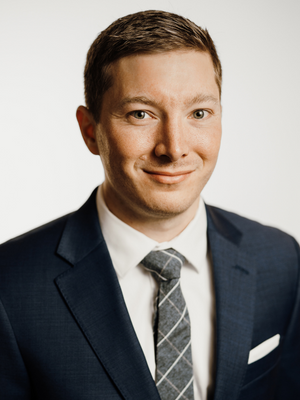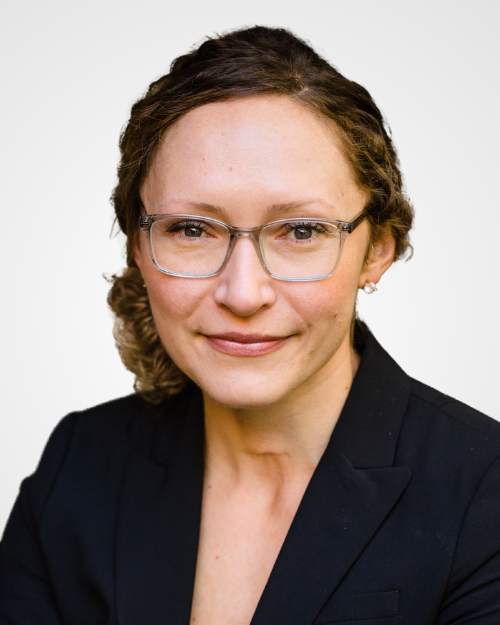Annual Giving: A Fresh Perspective on Year-End Appeals

The arrival of fall, the anticipation of the holiday season, and the imminent approach of the calendar year-end means one thing for nonprofit fundraising professionals: end-of-year appeals.
Whether your organization is already in the thick of appeal planning or just getting started, and regardless of your organization’s level of experience with year-end appeals, CFA Consultant Rob Ruchotzke offers encouragement and insight to enhance your annual giving strategy.
Reframe Urgency as Opportunity
Year-end appeals are often accompanied by a sense of urgency as fundraising professionals are driven by the pressure to reach certain fundraising targets, to create something new and compelling, and to deliver a personalized appeal to donors before the end of the year.
With nearly a decade of experience leading annual giving campaigns, Rob serves as one of CFA’s in-house annual giving experts and is familiar with the challenges that accompany year-end appeals. He often supports his clients to leverage urgency without letting it dominate the appeal planning process.
“The purpose of an appeal is to engage with your audience,” says Rob. “It’s an opportunity to share why your organization matters and how your work is meaningful.”
Rob advises nonprofits to step back and focus on the main objective. “There are a thousand ways to write an appeal, but the most important thing is telling a story that resonates,” says Rob. Staying grounded in the purpose of an appeal allows fundraising teams to shift their focus from urgency to opportunity.
For nonprofits writing appeals, the answers to these questions can help identify compelling content and tangible examples to complete your case for support:
1. What is our organization’s purpose?
2. Why does our work matter?
3. Who are the people our work impacts?
4. What are the positive outcomes of our work?
- Consultant Tip: For more guidance in creating a strong case for support, consider these 10 steps outlined in CFA’s recent article, “How to Write a Fundraising Case Statement,” to help you define your organization’s distinct value proposition.
Focus on Factors that Drive Increased Annual Giving
In addition to making a compelling case for support, Rob highly encourages nonprofits to focus on personalization. While nonprofits can personalize appeals in a variety of ways, ask amounts are one of the most critical details to customize in an appeal letter. If your organization has access to data on your donors’ giving history, Rob recommends including specific ask amounts aligned with recent gifts and patterns of giving to encourage increased support. Fundraising priorities, such as increasing the number of recurring donors or moving donors toward certain giving levels or societies, can help inform specific ask amounts as well.
Nonprofits can also personalize appeals by acknowledging the donor’s relationship to their organization and including distinguishing details – such as number of years of support, volunteer service, or last gift amount. Simple touches like hand-addressed envelopes, hand-written signatures, and personal notes not only strengthen relationships with your donors, but also help your appeal stand out from other generic requests.
While personalization lends itself more readily to mailed appeal letters, emails with tailored subject lines and similar distinguishing donor details are equally as important. Customizing any donor communication requires additional staff capacity, so Rob recommends strategies to personalize at scale – such as mail merge – that will enable your team to focus on your organization’s top donors.
- Consultant Tip: Personalization is a key fundraising strategy that nonprofits can integrate year-round to strengthen donor engagement and retention. With individual giving declining by 6.4% in 2022, according to Giving USA, personalized communications that address donors by name and reference their past involvement with your nonprofit will strengthen their connection to your organization and increase the likelihood of continued support.
Keep It Simple
Rob underscores the importance of keeping year-end appeal processes simple and timelines achievable. In addition to staying focused on the appeal’s main objective and prioritizing factors that will increase giving, Rob encourages nonprofits to strive for a balance between consistency and creativity.
“It’s common for organizations to get in a rut around what to feature in their appeals,” shares Rob. Rather than starting from scratch or attempting to recreate the wheel every year, nonprofits can save time and money by adhering to a consistent appeal structure while introducing nuanced stories into their appeals. “Nonprofits shouldn’t shy away from featuring success stories or updates from their leader year-after-year,” advises Rob. Rather, these components can provide consistent structure to the appeal while introducing new stories and examples of your organization’s work and impact.
As nonprofits develop their year-end project plans and timelines, CFA recommends leveraging a multichannel strategy for any year-end appeal. In a recent CFA article, “Optimizing Multichannel Fundraising,” Rob states that “multichannel appeals allow you to reach donors through a variety of channels and donors are more likely to respond via the channel of their preference.” As a result, multichannel campaigns are a cost-effective way to reach a donor where they are most likely to see your message and engage with your organization.
Consultant Tip: Check out CFA’s Guide to theAnnual Giving Cultivation Cycle.
Even with advanced planning and significant experience, executing year-end appeals can be stressful for fundraising professionals. By establishing realistic timelines, personalized messaging, and reframing urgency into the opportunity to tell your story, nonprofit fundraising teams can keep their most important audience – the donor – at the center of the appeal process from start to finish.
CONTACT US
Donor appeals are a critical component of a strong annual giving program. If your organization is interested in enhancing your annual giving strategy, contact CFA to explore how we can help.
Rob Ruchotzke, Senior Consultant
Rob Ruchotzke focuses on annual giving strategy, development assessments, campaign feasibility studies, and campaign counsel. Rob comes to CFA with nearly a decade of annual giving experience in higher education institutions. Most recently, Rob served as the director of annual giving at the University of Northern Iowa (UNI), where he led multichannel campaigns, developed crowdfunding platforms, managed annual giving vendors, and served as the strategy lead for UNI’s Day of Giving (#LivePurpleGiveGold). A native of Camanche, Iowa, Rob holds a BA in Public Relations from the UNI and resides in Cedar Falls, Iowa.
Kendall Carlson, Content Writer
A frequent contributor to CFA’s digital content, Kendall Carlson has spent her career advancing nonprofit organizations across the Twin Cities. With 16 years of experience, Kendall brings a balance of strategic and operational leadership spanning fundraising, program development, evaluation, and strategic planning. Most recently, Kendall served as Development and Communications Director at Hired, where she diversified revenue for the organization’s $11M budget and increased individual giving by 60%, led a rebrand, and launched an organization-wide data for impact initiative. Prior to Hired, Kendall served at Greater Twin Cities United Way, where she led an advancement strategy team to increase investment and engagement from the organization’s top corporate and major donors. Kendall is known as a strategic, solution-oriented leader with a high capacity for detail and commitment to quality. She launched her consulting practice, Luminate Consulting, in 2022 to bring her skills in fundraising and program strategy to nonprofits seeking sustainable growth.


